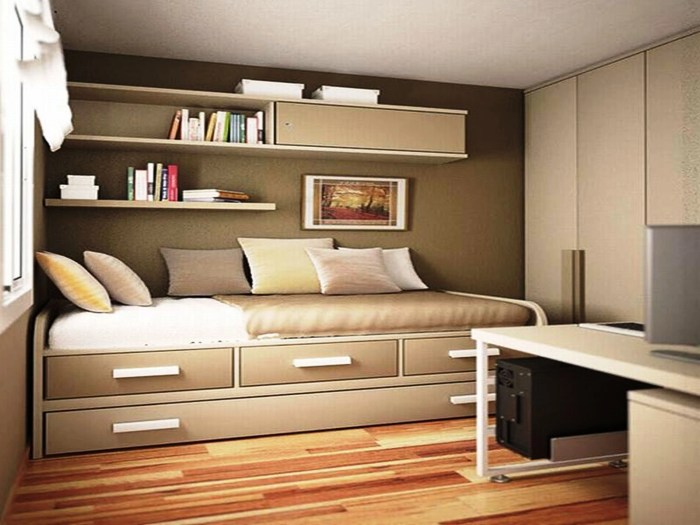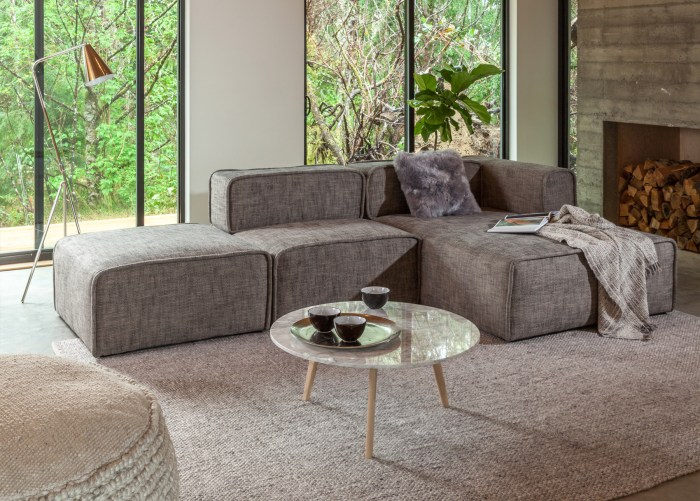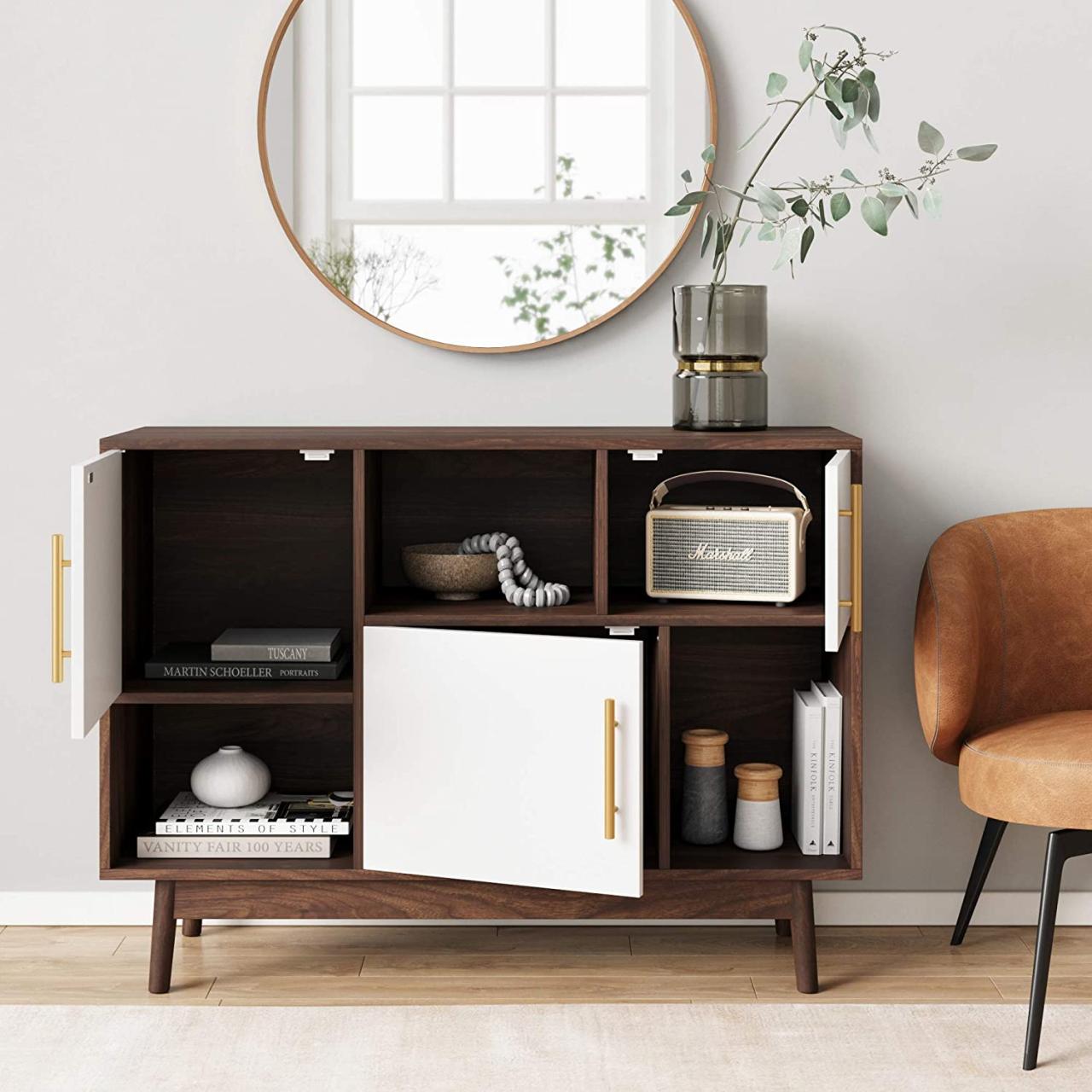Modern furniture for small spaces offers a unique design challenge, demanding creative solutions to maximize functionality and style within limited square footage. This exploration delves into the art of curating a comfortable and aesthetically pleasing living environment, even in compact spaces. We’ll examine space-saving furniture designs, clever storage solutions, and color palettes that enhance the illusion of spaciousness. The goal is to empower you to transform a small area into a stylish and functional haven.
This discussion will cover various aspects of furniture selection, from choosing the right pieces to optimizing their placement for maximum impact. We’ll consider different room types, offering specific recommendations for maximizing space and style in living rooms, bedrooms, and kitchens. The principles of minimalism and multi-functional furniture will be highlighted as key elements in achieving a successful design.
Living in a small space doesn’t mean compromising on style or comfort. With careful planning and the right furniture choices, you can create a functional and aesthetically pleasing home, even within limited square footage. This comprehensive guide explores the world of modern furniture designed specifically for small spaces, offering practical tips and stylish solutions to help you optimize your living environment.
Understanding the Challenges of Small Space Living: Modern Furniture For Small Spaces
Small spaces present unique design challenges. Clutter can quickly overwhelm a small room, making it feel cramped and disorganized. The key is to maximize vertical space, utilize multi-functional furniture, and select pieces that are both stylish and space-saving. Poor lighting can also exacerbate the feeling of confinement, so incorporating effective lighting solutions is crucial. Finally, the selection of color palettes and patterns plays a significant role in creating an illusion of spaciousness.
Common Challenges and Their Solutions:, Modern furniture for small spaces
- Limited Storage: Opt for furniture with built-in storage, such as ottomans with hidden compartments, beds with drawers, or wall-mounted shelves.
- Lack of Natural Light: Use mirrors strategically to reflect light and create a brighter, more open feel. Consider light-colored walls and furniture to enhance the effect.
- Feeling Crowded: Choose furniture with clean lines and a minimalist aesthetic. Avoid bulky pieces and opt for lighter, more streamlined designs.
- Difficulty in Movement: Ensure sufficient walkway space between furniture pieces. Avoid blocking doorways or creating congested areas.
Choosing the Right Modern Furniture for Small Spaces
Modern furniture often emphasizes clean lines, minimalist designs, and functionality. These characteristics are particularly well-suited for small spaces. When selecting furniture, consider the following factors:
Key Considerations for Furniture Selection:
- Multi-functional Furniture: Sofa beds, storage ottomans, and convertible dining tables are excellent examples of space-saving solutions. Look for pieces that serve multiple purposes to maximize efficiency.
- Scale and Proportion: Choose furniture that is appropriately scaled for the room. Oversized furniture will make the space feel smaller, while undersized furniture can look lost.
- Material and Color: Light-colored furniture and lighter materials like glass or acrylic can create a sense of airiness and openness. Avoid dark, heavy materials that can make the space feel smaller.
- Vertical Space: Utilize vertical space with tall bookcases, wall-mounted shelves, and hanging storage solutions. This helps keep floor space clear and uncluttered.
- Legroom and Clearance: Ensure adequate legroom under tables and sofas. Consider the clearance needed for doors and windows to avoid obstructions.
Specific Furniture Recommendations for Small Spaces
Let’s delve into specific types of furniture ideal for small spaces and how to choose them effectively:
Living Room Furniture:
- Sofa: Choose a compact sofa with a clean design. A loveseat or a small sectional can be a good alternative to a full-size sofa. Consider a sofa bed for added functionality.
- Coffee Table: Opt for a nesting coffee table set or a lift-top coffee table to save space when not in use. A small round coffee table can also work well in tighter spaces.
- Storage Ottoman: A storage ottoman serves as extra seating and provides valuable hidden storage.
- Floating Shelves: Wall-mounted shelves create additional storage without taking up floor space.
Bedroom Furniture:
- Murphy Bed: A Murphy bed folds away into the wall, freeing up valuable floor space during the day.
- Platform Bed with Drawers: A platform bed with built-in drawers provides ample storage underneath.
- Nightstands: Choose slim nightstands or floating nightstands to maximize space.
- Vertical Storage: Use tall, narrow wardrobes or shelving units to maximize vertical space.
Dining Room Furniture:
- Drop-Leaf Table: A drop-leaf table can be expanded when needed and folded away to save space when not in use.
- Wall-Mounted Folding Table: A wall-mounted folding table is a space-saving solution for smaller dining areas.
- Space-Saving Chairs: Choose stackable chairs or chairs that can be tucked under the table when not in use.
Incorporating Design Principles for Small Spaces
Beyond furniture selection, design principles play a vital role in creating a spacious and inviting atmosphere in small spaces.
Design Tips for Small Spaces:
- Light Colors: Use light, neutral colors on walls and furniture to make the space feel larger and brighter.
- Mirrors: Strategically placed mirrors can reflect light and create the illusion of more space.
- Minimalist Decor: Avoid clutter by keeping decorations to a minimum. Choose a few key pieces that add personality without overwhelming the space.
- Declutter Regularly: Regularly decluttering is essential to maintain a sense of spaciousness. Consider donating or selling items you no longer need.
- Good Lighting: Adequate lighting is crucial. Use a combination of ambient, task, and accent lighting to create a warm and inviting atmosphere.
Frequently Asked Questions (FAQ)
- Q: What are the best materials for small space furniture? A: Light-colored wood, glass, acrylic, and metal are good choices as they create a sense of airiness.
- Q: How can I make my small living room feel bigger? A: Use light colors, mirrors, and minimalist decor. Choose furniture with clean lines and avoid bulky pieces.
- Q: What type of bed is best for a small bedroom? A: A Murphy bed, a platform bed with drawers, or a loft bed are all space-saving options.
- Q: How can I maximize storage in a small apartment? A: Utilize vertical space with shelves and wall-mounted storage. Choose furniture with built-in storage.
- Q: What are some good resources for finding modern furniture for small spaces? A: Websites like IKEA, CB2, West Elm, and Wayfair offer a wide selection of space-saving furniture.
Resources
Call to Action
Transform your small space into a stylish and functional haven! Start browsing for modern, space-saving furniture today and create the home of your dreams. Remember, smart choices and thoughtful planning can make all the difference.

General Inquiries
What materials are best for small space furniture?
Lightweight yet durable materials like glass, acrylic, and metal are excellent choices. They create a sense of airiness and avoid overwhelming the space.
How can I maximize storage in a small space?

Utilize vertical space with tall bookcases or shelving units. Consider ottomans with built-in storage, and explore multifunctional furniture like sofa beds or coffee tables with drawers.
What color palettes are best for small spaces?

Light and neutral colors such as whites, creams, and pastels help to make a room feel larger. Accents of bolder colors can be used strategically to add personality without overwhelming the space.
